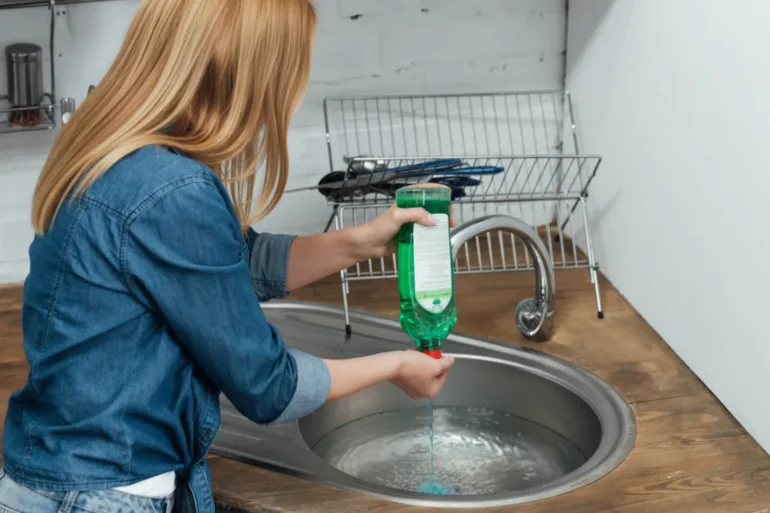If the view through the oven glass is more like an abstract work of art than a culinary “showroom”, then this article is for you. Burnt-in grease and baking residue that won’t come off despite repeated attempts to clean are not just a visual nuisance – they’re a reminder of all those recipes that ended with “I’ll clean it better next time”. And that “next time” never comes. How do you effortlessly clean your oven glass to a shine?
cleaning
Mold on silicone grout in the bathroom is not just an aesthetic problem. It is a microbiological phenomenon that can also affect the air quality in the room over time, especially if the bathroom is not properly ventilated. It most often appears in the form of black stains on the joints between the bathtub, shower and wall, where moisture often accumulates. The cause of its formation is a combination of a warm and humid environment, insufficient air circulation and the presence of organic residues (cosmetics, skin cells, etc.), which serve as food for mold.
Have you just burned your lunch to the point where your crockery is smoking like a volcano? Does your burnt pot look more like an ancient artifact than a modern kitchen tool? Don't worry—it's not the end of your cooking career. Instead of searching for a new pot, try a trick that uses a few everyday ingredients to do some real cleaning magic.
The oven – a faithful assistant for Sunday lunches, Christmas cookies and all those "just 20 minutes at 180 degrees" dinners. But when it's time to clean, it seems like it's staring us straight in the soul, covered in grease stains, burnt-on residue and the dark history of past culinary exploits. Many people prefer to ignore this moment to the extreme.
Tired of strange sounds coming from your drain, slow water flow, and that fishy smell coming from your sink? Welcome to the clogged drain club—the world's largest (and most frustrating) home improvement club. But be warned: you're not just paying the price with your nerves, you're also paying with time, money, and unnecessary experimentation.
Does your shower greet you in the morning with a jet that resembles a waterfall from 1983 more than a modern bathroom experience? Maybe it's time to turn to your kitchen cabinet instead of the plumber. Limescale is a silent saboteur that builds up on your shower nozzles, almost imperceptibly reducing flow, reducing efficiency, and increasing water usage—until one morning you're surprised by a cold trickle instead of a steady stream.
Every household has its faithful helper in the fight against dust. Sometimes it's quiet, often a bit noisy, but always ready to work. And then there comes a day when your vacuum cleaner suddenly seems to stop pulling. You vacuum, but the floor remains just as littered with debris as it was two minutes ago. Your first impulse? "Is it time for a new vacuum cleaner?" But hold that thought.
How many times have you automatically thrown an old dishwashing sponge in the trash when it has lost its hardness, color and dignity? Understandable - there is no room for compromise in the kitchen when it comes to hygiene. But just because a sponge is no longer suitable for contact with plates does not mean that we cannot give it an honorable "second career" - and a much more diverse one than you imagine.
When the cold outside hits, the inside of your home becomes your sanctuary of comfort. Heating plays a major role in this, but many people don't realize that the reason for "cold feet" can lie in a simple household neglect - unclean radiators. These often only work at half capacity because their internal channels are full of dust. The result? Less heat, higher bills and significantly worse air quality.
In every household, there are little tricks that are quietly passed down from generation to generation – the ones that aren’t in the home improvement catalogs or get their 15 minutes of fame in TV commercials. One such trick that’s been taking the social media world by storm lately is using baking paper to clean your kitchen sink and faucet. No chemicals, no scrubbing, no dramatic scenes with rubber gloves.
Leather has a special status. It's not just a material – it's an expression of a lifestyle. A leather jacket isn't something we put on just because it's cold. It's a piece that tells a story with every stitch: about concerts in the rain, weekends on a motorbike, or a purchase that was "a little too expensive" but still doesn't regret a cent. That's why it deserves more than just a cursory wipe with a wet wipe or, God forbid, a trip to the washing machine.
Pimpled sweaters aren't just an aesthetic problem—they're also uncomfortable to the touch, shorten the life of your garment, and cause frustration every time you pull an otherwise perfectly good piece out of your closet. Pimples, or textile balls caused by rubbing fibers, are especially common on wool, acrylic, fleece, and other knits. First you notice one, then a whole family—and before you know it, your favorite sweater looks like it's been through three seasons of Game of Thrones.










